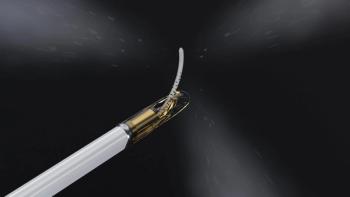
ARRT toasts milestone, tweaks MR and ultrasound certification
The American Registry of Radiologic Technologists in June celebrated its 250,000th certification. The ARRT might reach the half-million mark sooner than expected as it gears up to allow MRI techs and sonographers to be certified without first becoming radiologic technologists.
The American Registry of Radiologic Technologists in June celebrated its 250,000th certification. The ARRT might reach the half-million mark sooner than expected as it gears up to allow MRI techs and sonographers to be certified without first becoming radiologic technologists.
Approximately 83,000 technologists are registered in one or more additional primary categories and/or postprimary categories. Primary categories are radiography, nuclear medicine, and radiation therapy. Postprimary categories include mammography, CT, MRI, and sonography.
In 2006, however, MRI and sonography will become designated primary categories. It will no longer be necessary for MR technologists or sonographers to become RTs first to receive ARRT certification.
"Both transitions are ARRT's response to increasing numbers of non-RTs entering the discipline immediately upon completing an educational program in that discipline, rather than the established pattern of beginning their careers in radiography, nuclear medicine technology, or radiation therapy," said the registry's 2005 annual report.
Non-RT sonographers will be able to apply for ARRT certification beginning January 2006. These sonographers must have graduated from a program that is accredited by a mechanism acceptable to the ARRT.
The start date of the MRI program has not been set, but it will begin sometime in 2006. The ARRT last year sought input from the technologist community regarding whether MRI is a sufficiently independent discipline that should not need RT certification. Respondents said that because MRI is not based upon ionizing radiation, MR technologists should not need to complete the RT program.
For nearly five decades, the number of RTs has more than doubled every 50 years. Growth slowed in the 1980s and 1990s and has recently picked up. A shortage in the 1990s led to increased enrollment, and those graduates have helped to increase the number of RTs by 75% since 2000.
For more information from the Diagnostic Imaging archives:
Newsletter
Stay at the forefront of radiology with the Diagnostic Imaging newsletter, delivering the latest news, clinical insights, and imaging advancements for today’s radiologists.

























